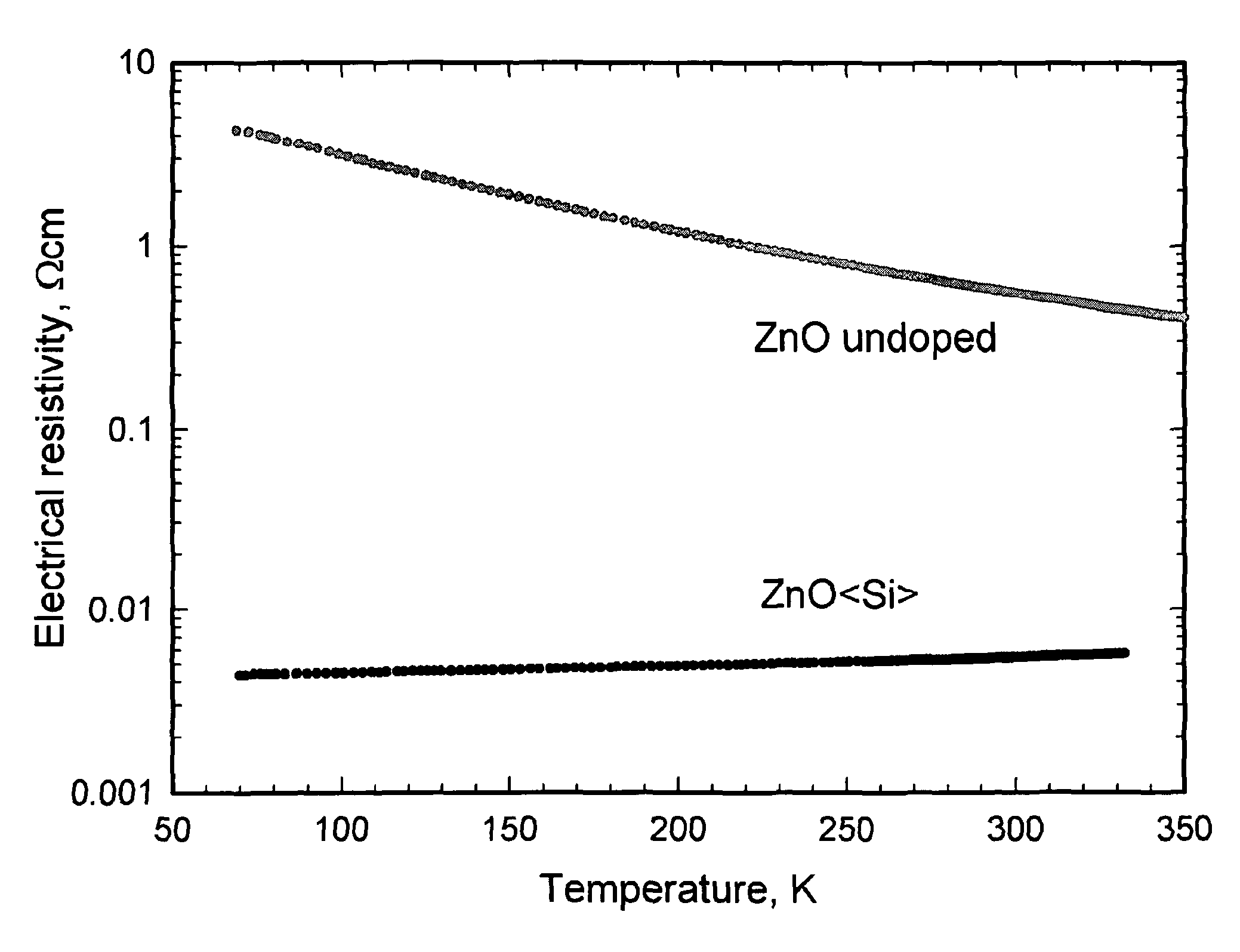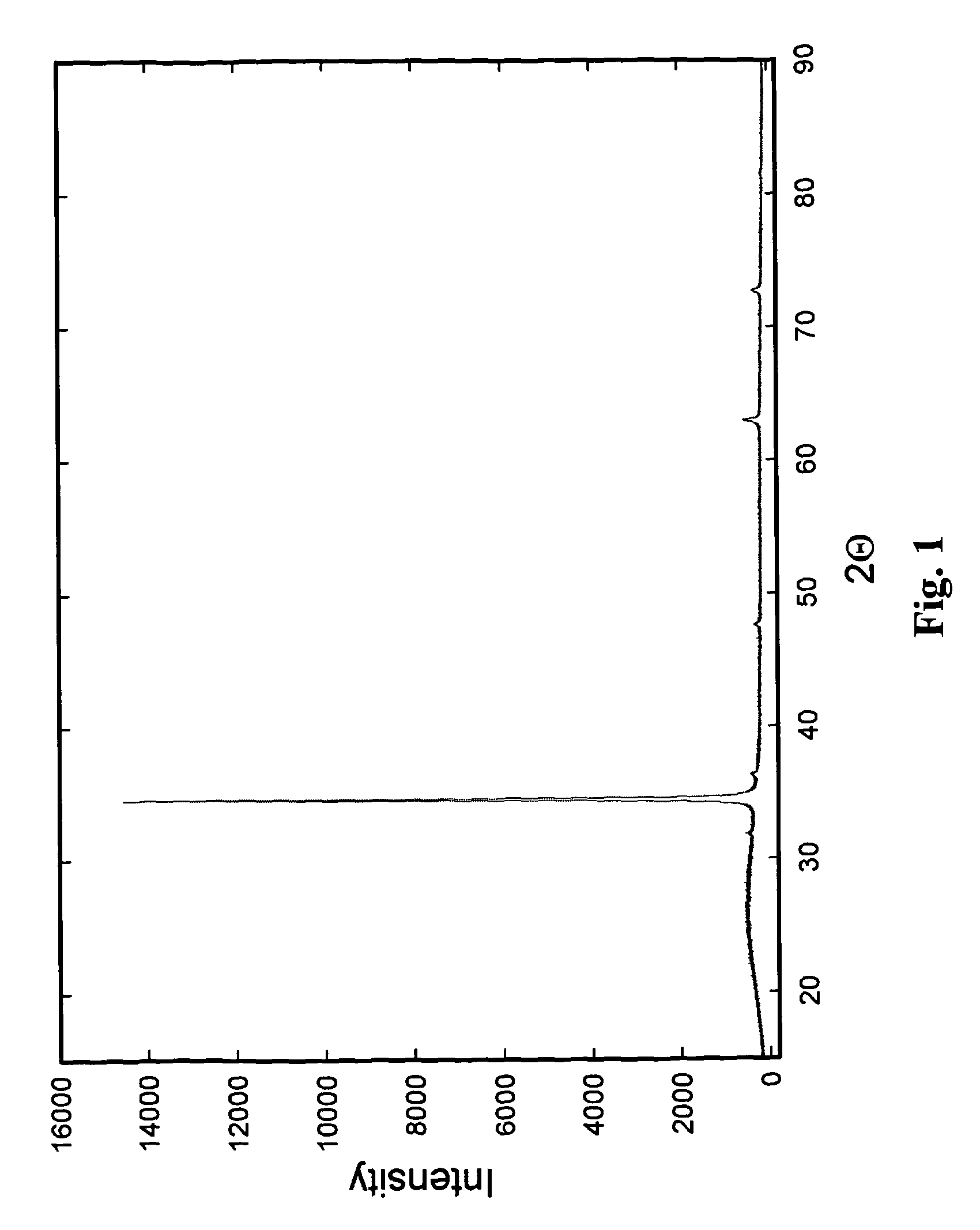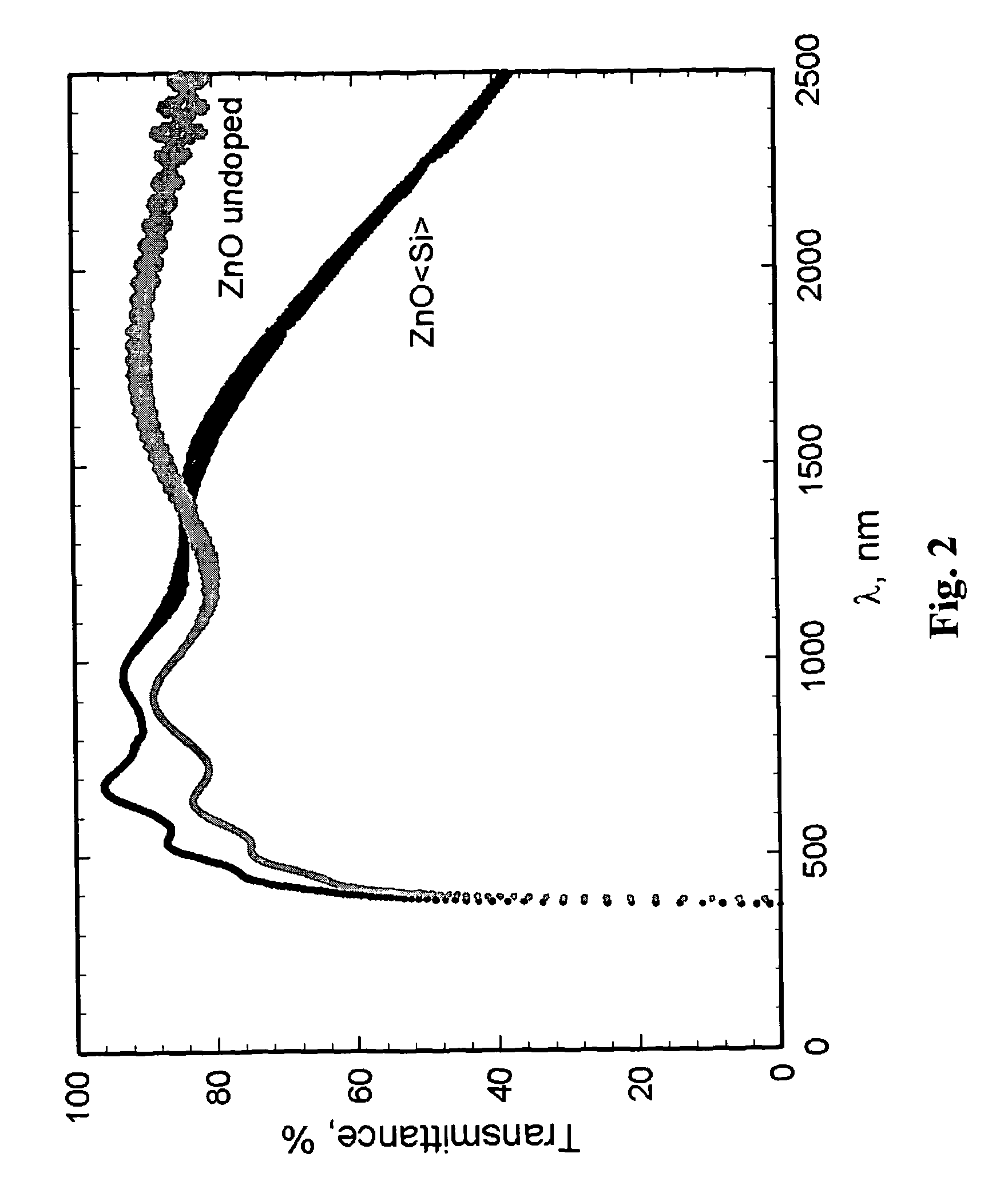Transparent electrically conducting oxides
a technology of electrical conductivity and oxides, applied in the direction of liquid/solution decomposition chemical coatings, non-metal conductors, instruments, etc., can solve the problems of limited application range of pld in the industry, difficult to sustain stable supply of indium for an expanding market of flat panel displays, solar cells, etc., and achieves low cost, convenient large-area deposition, and low cost
- Summary
- Abstract
- Description
- Claims
- Application Information
AI Technical Summary
Benefits of technology
Problems solved by technology
Method used
Image
Examples
example 1
Preparation of Precursor Solution
[0183]A precursor solution was prepared by mixing 17.5 ml of isopropanol, 6.75 ml of deionised water and 0.75 of concentrated acetic acid in a volumetric ratio of 70:27:3, respectively. Then, 0.0133 g of silicon tetra-acetate was completely dissolved in the solvent mixture at a temperature of 50° C. Subsequently, 0.4585 g of zinc acetate dihydrate was dissolved in the resulting solution. The concentration of zinc acetate in the final precursor solution was 0.1 M, and the concentration of silicon tetra-acetate in the final precursor solution was 0.002 M, thereby giving a Si / (Si+Zn) ratio of about 0.02 (i.e. 2 mol % Si). These masses and volumes enable preparation of 25 ml of precursor solution, which is typically used for depositing thin films of around 3-4 cm2. Larger area films may be prepared using larger volumes of precursor solution, as described below in Example 2.
Deposition of a Silicon-doped Zinc Oxide Thin Film by Spray Pyrolysis
[0184]The pre...
example 2
Preparation of a Larger Volume of Precursor Solution, for Deposition of a Film Over a Surface Area of 0.01 m2
[0190]A precursor solution is prepared by mixing 437.5 ml of isopropanol, 168.75 ml of deionised water and 18.75 ml of concentrated acetic acid in a volumetric ratio of 70:27:3, respectively. Then, 0.3325 g of silicon tetra-acetate is completely dissolved in the solvent mixture at a temperature of 50° C. Subsequently, 11.4625 g of zinc acetate dihydrate is dissolved in the resulting solution. The concentration of zinc acetate in the final precursor solution is 0.1 M, and the concentration of silicon tetra-acetate in the final precursor solution is 0.002 M, thereby giving a Si / (Si+Zn) ratio of about 0.02 (i.e. 2 mol % Si).
[0191]The precursor solution may then be deposited, using spray pyrolysis as disclosed in Example 1, to form a Si-doped ZnO thin film as described in Example 1, over an area of 0.01 m2.
[0192]Even larger area thin films may be prepared by scaling-up the volum...
PUM
| Property | Measurement | Unit |
|---|---|---|
| electrical resistivity | aaaaa | aaaaa |
| distance | aaaaa | aaaaa |
| diameter | aaaaa | aaaaa |
Abstract
Description
Claims
Application Information
 Login to View More
Login to View More - R&D
- Intellectual Property
- Life Sciences
- Materials
- Tech Scout
- Unparalleled Data Quality
- Higher Quality Content
- 60% Fewer Hallucinations
Browse by: Latest US Patents, China's latest patents, Technical Efficacy Thesaurus, Application Domain, Technology Topic, Popular Technical Reports.
© 2025 PatSnap. All rights reserved.Legal|Privacy policy|Modern Slavery Act Transparency Statement|Sitemap|About US| Contact US: help@patsnap.com



